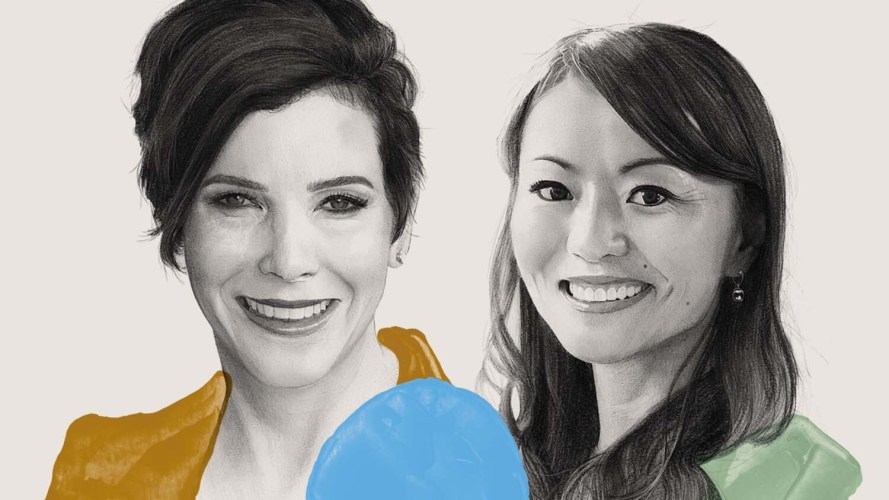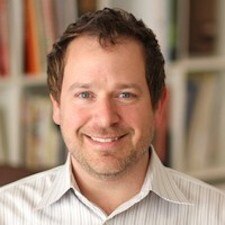The Culture Change Behind Net Zero and Employee Wellbeing



Jen Fisher of Deloitte and Karen Fang of Bank of America share how values can drive change, keep teams whole, and impact the bottom line.

Michael Rivo
If this past year has taught us anything, it’s that change and transformation are not only inevitable but also take shape in a variety of ways: large and small, personal and collective, challenging and frictionless. With metamorphosis top of mind, we sought to conduct a conversation between two business leaders who know all about metamorphoses, from two different perspectives and scales.
Jen Fisher is the chief wellbeing officer at Deloitte, the best-selling author of “Work Better Together,” and the host of the podcast WorkWell. You may think of her work as a bottom-up effort, provoking lasting change in people so they can live fulfilling and balanced lives, both in the office and at home.
Karen Fang is managing director and global head of sustainable finance at Bank of America, where she is responsible for working across the bank and with its clients to scale capital deployment for an environmental transition to a net zero future and for social inclusive development. Her approach to metamorphosis is notably top-down, incentivizing the world’s largest organizations to urgently change the way they do business so as not to bear the responsibility for an impending climate disaster.
Hear this conversation on the Blazing Trails podcast
Listen to author and podcast host Michael Rivo interview Deloitte’s Jen Fisher and Bank of America’s Karen Fang.



Despite their different roles, both Fang and Fisher brought to the conversation a rich understanding of the power of transformation – from the small ways we thank ourselves every morning to the large ways we allocate capital in a corporation.
MICHAEL RIVO: Jen, you’re chief wellbeing officer. This is a new thing. Tell me what that’s all about.
JEN FISHER: About seven years ago, I found myself completely burnt out to the point of needing to take a leave of absence from Deloitte. I was struggling with my physical health as well as my mental health. And burnout wasn’t something that was talked about in the workplace seven years ago. I took time off. I had to get healthy and well. Quite frankly, I had to redefine the role that work played in my life. It was one of my mentors who said, “Well, if you need this, then why doesn’t everybody else need it?” That sent me on the journey of putting together a business case and convincing Deloitte to create the chief wellbeing officer role in 2015.
RIVO: Karen, your career transformation I imagine is a little bit different, but you have also created something within a big organization that might not have existed before. Tell me about leading sustainable finance at Bank of America and how you evolved into that role.
KAREN FANG: I’ve been with the bank for 11 years, and I was always running structure finance, sales, and trading businesses in global markets. From a technical standpoint, my role hasn’t changed that much. Before I was dealing with stocks, bonds, derivatives, and infrastructure. Today I’m really focused – laser-focused – on projects that are aligned with the United Nations sustainable development goals. I think all of these climate disasters we’re witnessing today bring more urgency to the work we do to pour capital into environmental transition and social inclusion initiatives.
RIVO: Karen, in your world, this transformation may be more measurable, but you’re still faced with uncertainties around investing in new spaces and reallocating capital where it hasn’t been before. I imagine working across a whole industry trying to do this is really challenging.
FANG: The first thing we always say is, “Don’t let perfect be the enemy of the good.” Right? There are a lot of things we need to do over the next three decades, including changing the way we live and move and eat and consume in fundamentally different ways. It’s not just resistance to change, though – it’s that a lot of people don’t know how to change. It’s really about collectively reskilling and building a common understanding that we all need to leave the world a better place for our offspring, for our planet.
RIVO: I imagine, Jen, in your world, this reskilling sounds really familiar, but it’s a really different space. How are you bringing these ideas around wellbeing and around change into the organization?
FISHER: What Karen said about bringing it down to the human level absolutely resonates. My role focuses much less on the benefits, programs, and resources that we make available to our people. Those are very important foundational components, but I really focus on the culture change that needs to happen – the change that allows and empowers individuals to take care of themselves in whatever way that means to them. It’s about educating executives about the relationship between wellbeing and high performance. I used to hear, “If I give Karen the flexibility to go to yoga at 2:00, what happens if I need her at 2:25?” Well, Karen’s going to be back and online from yoga at 3:05 or 3:10, and she is going to be happier, more engaged, and do better work.
RIVO: What I see as a thread through the conversation is that culture and values have to drive decision-making, whether it’s around sustainability or wellbeing. Karen, tell me what that looks like inside Bank of America – how core values are disseminated and communicated across the organization.
FANG: I think cultural change will have to accompany a lot of these environmental transitions that we talked about. For an organization the size of Bank of America’s, this change has to happen from the top. Then it takes relentless communication and repetition. “Net zero before 2050, deploy $1.5 trillion in capital by 2030.” We repeat that probably hundreds of times per month, so much so that our 210,000 employees and our clients and our supply chain partners truly understand it. Doing that allows us to solicit grassroots ideas from teams across the bank, who we then encourage to find an executive sponsor to help develop their ideas. It’s actually surprising how flat the organization can be once you find the right people advocating together for the right idea. I think it takes repetition, then it takes relentless focus.
RIVO: Jen, you know perhaps better than most how strong relationships can propel us to success and transform our experience at work. Can you tell us more?
FISHER: Studies show that the strength of our personal relationships in our life are actually the #1 influencer of our long-term health and happiness. So when people say to me, “Wow, you’ve been at Deloitte for 20 years. What is it that keeps you there so long?” It’s the relationships with the people that I have. You can think of wellbeing as a three-legged stool: There’s an organizational role, which includes policies, programs, and leadership. There’s the individual component, defining our boundaries and practicing self-care. But where the magic really happens is actually at the team level. And it doesn’t require a ton of investment of money or time, quite frankly. It’s about supporting authentic human connection and having conversations with the colleagues that you work most often with, because those are the ones that have the biggest impact on your wellbeing.
FANG: Jen, I’m curious if you think a chief wellbeing officer is very distinct from human capital management in a large organization. What would you tell the head of human resources about the benefit of having this very important role separated from the rest of the human capital functions?
FISHER: What I would say to HR execs – and execs across the board, quite frankly – is if you employ human beings, you need to do more to care for their wellbeing. And I think the pandemic has proven that we need to move beyond what I would categorize as standard health and safety of our workforce and actually continue to build workforces that are truly resilient, because we are living in a world that is constantly disrupted. Not having a workforce with resilient capabilities is actually a huge risk to your organization. I see the chief wellbeing officer responsible for defining wellbeing across every C-suite role, with HR being the engine that supports the actual workforce.
A lot of the sustainability metrics, at least that I’m aware of, don’t actually talk about human sustainability – they focus on environmental and climate impact. I see a really strong emerging connection between human sustainability and the impact of other sustainability metrics. What are your thoughts, Karen?
FANG: I think the environmental, social, and governance (ESG) metric space is going to evolve very quickly because people need those to be more meaningful, and all companies need to disclose the same metrics for them to be effective. Only then can we compare and contrast, and figure out what to address collectively. I think you’re absolutely right that the human component is not there – morale, productivity, wellbeing, health, mental and physical, all of those things show up in the bottom line. I think that direct evaluation and the methodology of it needs to evolve very quickly. So I think we have a lot of work to do together, and I’m looking forward to joining this journey with you.
FISHER: That sounds great. I was just going to say I think we found something that we can go tackle together.
**
Remember, change takes time – lots of it. While you’re working toward transformation, don’t lose sight of your goals. In fact, let people in on what you’re striving toward. Why? Because collective buy-in can speed things up quickly and help to achieve milestones that you didn’t even think were possible. Whether it’s lowering carbon emissions or ensuring mental health is a priority, every journey starts with a single step.
This article originally appeared in Vantage Point, a Salesforce magazine










